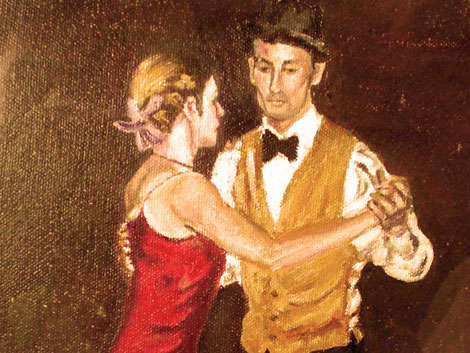
Like sushi and Japan, samba and Brazil, and beer and Germany, tango is a cultural artifact that both defines and is defined by a country. Tango was born and grew up here, and given its huge cultural significance, it behooves all of us expats or tourists to give it the ole college try! This guide will help you to do just that.
The history of tango
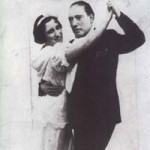 Tango in Argentina had its genesis in milonga, which was the style of dance that immediately preceded tango. If you recognize that word, it might be because the word milonga also refers to a place or an event where the tango or milonga is danced and it’s also the name for a piece of music to which the milonga is danced. Confused yet? Perhaps it’s clearer to say that it’s quite possible to dance the milonga to a milonga at a milonga!
Tango in Argentina had its genesis in milonga, which was the style of dance that immediately preceded tango. If you recognize that word, it might be because the word milonga also refers to a place or an event where the tango or milonga is danced and it’s also the name for a piece of music to which the milonga is danced. Confused yet? Perhaps it’s clearer to say that it’s quite possible to dance the milonga to a milonga at a milonga!
Milonga music had its roots in the European music that was brought to the Rioplatense region by European migrants. It was up-tempo and involved improvisation from the musicians. It had its heyday in the 1870s. Over time steps were developed to go with the music, and this was the birth of the milonga dance style.
The tango came along a little later, during the late 1800s. It was influenced by the milonga, but also by the Cuban habanera (a slow, graceful style of music and dance), by the Uruguayan candombe (a musical style based on the drums), and by Africans living in Buenos Aires.
Some experts think that the tango evolved from the milonga in order to give less skilled dancers a way to participate in dancing (though anyone who has ever tried to learn the tango may question that!). Certainly the tango is danced at a slower tempo and rhythm than the milonga. The tango also has a sadder tone: the music is about loss, longing and other melancholy feelings, while the milonga is altogether a faster and less sensual affair.
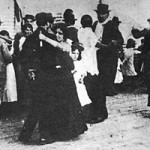 Tango quickly became the more popular dance, though for a long time it was associated with gangsters and the rough, immigrant underclass of Buenos Aires. Due to the large numbers of overwhelmingly male immigrants in Buenos Aires there were many more men than women in the city, and so tango musicians were employed to entertain queues of men in the brothels, who danced together while awaiting their turn. Needless to say this didn’t improve tango’s image!
Tango quickly became the more popular dance, though for a long time it was associated with gangsters and the rough, immigrant underclass of Buenos Aires. Due to the large numbers of overwhelmingly male immigrants in Buenos Aires there were many more men than women in the city, and so tango musicians were employed to entertain queues of men in the brothels, who danced together while awaiting their turn. Needless to say this didn’t improve tango’s image!
In the early 1900s tango was still struggling for respectability in Argentina when it was taken to Paris by Argentine sailors. It quickly became a massive hit in France, and by 1913 it was a worldwide craze. Ironically, this international popularity meant that it suddenly had cachet with the middle and upper classes of Argentina, who quickly embraced it.
One effect of the newfound popularity of tango among middle and upper class people was a change in the subject matter of the lyrics of tango music. The lyrics of tango music up until this point were too bawdy for the sensibilities of these classes, so they were abandoned in favor of much more poet and beautiful lyrics. This focus on the music also led to great tango singers starting to emerge.
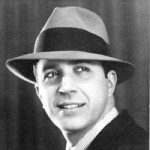 The ‘golden age’ of tango in Argentina is generally agreed to have begun in about 1932. This era combined great tango orchestras with singing superstars like Carlos Gardel and a massive enthusiasm for dancing tango. Tango gained widespread, mainstream popularity in Argentina, and it was very also popular in Europe and the United States. For over two decades it flourished.
The ‘golden age’ of tango in Argentina is generally agreed to have begun in about 1932. This era combined great tango orchestras with singing superstars like Carlos Gardel and a massive enthusiasm for dancing tango. Tango gained widespread, mainstream popularity in Argentina, and it was very also popular in Europe and the United States. For over two decades it flourished.
The golden age ended in 1955 with the coup that installed a military government in Argentina. Meeting in large groups to dance tango were impossible, as the government imposed bans on public gatherings. These were the dark ages of tango, and it wasn’t until the 1980s, after the return of democracy to Argentina, that tango had a revival in Argentina and took off again – a tango renaissance, if you like.
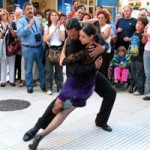 Today tango in Buenos Aires is part tacky tourist spectacle and part sacred tradition. It is naturally more associated with older people, but there are plenty of young exponents as well. Tango has been exported to the world, but many enthusiasts in other countries move mountains to come here, to the acknowledged beating heart of tango, to learn from the masters. And you’re already here…so get yourself to a milonga ASAP!
Today tango in Buenos Aires is part tacky tourist spectacle and part sacred tradition. It is naturally more associated with older people, but there are plenty of young exponents as well. Tango has been exported to the world, but many enthusiasts in other countries move mountains to come here, to the acknowledged beating heart of tango, to learn from the masters. And you’re already here…so get yourself to a milonga ASAP!
Five Great Tango Shows in Buenos Aires
There are many, many tango shows in Buenos Aires. The format is usually a dinner show with a variety of dancers and musicians performing over a period of somewhere between 1.5 and 3 hours. Some are located in venues that have been tango salons for decades, while some inhabit newer facilities.
Unfortunately, perhaps because they are put on for solely for tourists, most tango shows seem to be more concerned with extracting the maximum possible amount of money from the audience rather providing a great experience. But then that’s tourism the world over, and there are definitely still some good ones (like the five listed below).
Keep in mind that tango is both a dance and a style of music, so a tango show is rarely 100% dancing: expect some musical numbers without dancing to accompany them.
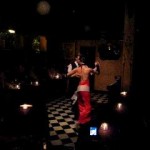 1. Bar Sur
1. Bar Sur
The tango show at Bar Sur in San Telmo is on the ‘not so touristy’ end of the spectrum…but it is still undoubtedly aimed squarely at tourists, as you can tell from the rather pricey cover charge and similarly expensive drinks. The food is also only average. On the other hand, the show offered at Bar Sur is very good, and as there are only nine tables in the place it has a nicely intimate feel.
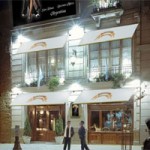 2. La Ventana Tango Show
2. La Ventana Tango Show
Like many tango shows the food at La Ventana is barely average (in fact you might want to skip the dinner), but the excellent show makes up for it. The performers include solo couples, groups of couples, two different orchestras and a gaucho dancer, among others. The show is presented in nice surroundings in a grand old building in San Telmo.
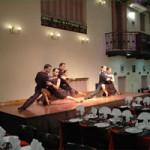 3. Complejo Tango
3. Complejo Tango
This dinner tango show starts with a basic tango lesson, which is a nice touch if you haven’t had any experience with dancing tango before and want to try it. The food is fine as long as you stick to the basics (steak and pasta), all the tables offer a good view of the stage. The show is small and basic but entertaining, with a live band, singers and three couples dancing.
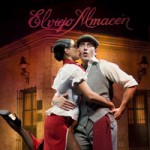 4. El Viejo Almacen
4. El Viejo Almacen
El Viejo Almacen (‘the old grocery store’) has been a San Telmo tango hall since 1969. Be warned that perhaps even more so than others it’s more of a ‘mixed talent’ show – there are quite a few musical numbers without any dancing. Also, the food is both bad and expensive. On the upside the performances are excellent and the venue is historic and nicely intimate.
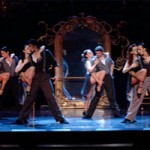 5. Tango Porteño
5. Tango Porteño
This is a larger, grander, more Broadway-style show. It combines a live band with a multi-media show about the history of tango and some good dancing. The choreography, lighting and production values are generally much better than at the smaller shows.
Five Buenos Aires Tango Schools
Watching tango is all well and good, but wouldn’t you rather get involved? Many people have come to Buenos Aires, fallen in love with tango, and through dedication and a great teacher have become very good at it.
Just as for milongas and shows, there is no shortage of ready, willing and able tango teachers in Buenos Aires. The best way to start is with a group class and then move on to a private teacher if you decide that you like tango and want to devote the time to really get good.
1. La Academia de Susana Miller
This tango academy is located at Club El Beso, which is just off Corrientes at Riobamba 416. It holds classes most nights of the week, and often they’re conveniently followed by a practica (that is, a practice dance where protocol is relaxed) and then a milonga. Susana Miller doesn’t teach all the classes – she’s too famous for that! – but the school has plenty of other excellent teachers. With generally a great atmosphere and a friendly vibe, this school is one of the best. For more information you can either call El Beso on 4953-2794, or if your spoken Spanish leaves something to be desired, email them at elbesotango@yahoo.com.ar.
This is an ‘official’ tango school in name only (there’s no such thing), but it attracts many well-known dancers, teachers and musicians. Escuela Argentina de Tango operates out of multiple locations around the city and runs classes every day of the week, so you’ll need to call 4312-4990 or check out their website at www.eatango.org for more information.
The very well-known Mr Dante holds friendly group classes in Recoleta, on Av. Las Heras 2416 (1st floor), on Mondays from 9pm to 11pm. His classes work like more a supervised practica than a class, but he keeps an eye on everyone and makes lots of suggestions based on what he sees. There’s a video of him giving a lesson here. Note that the classes are always completely in Spanish. Call 4432-7756 or email cachodante@yahoo.com.ar.
4. Tango Brujo
Many classes are taught here, but some of the best are the ones at 1pm on Wednesdays and Fridays. Classes are in a cozy dance studio and are smaller than some other schools, which obviously suits some people better. Classes are given in English as well as Spanish and are professional and very non-threatening. The address is Esmeralda 754. Call 4325-8264 or email info@tangobrujo.com.ar.
Find the Praktika 8 tango class at Loyola 828 in Villa Crespo, Tuesday nights from 8pm to 9:30pm with, conveniently, a great milonga afterwards. Classes are divided into beginner and intermediate, and it’s cheap. Praktika 8 tends to attract a younger and less formal crowd. To get in touch, call 15-4066-5831 or send an email to info@praktika8.com.ar.
Five Buenos Aires Milongas
As mentioned above, a milonga can be either a venue or an event. Salón Canning, for example, is a tango dance hall and so a milonga. Parakultural is a milonga which is held at Salón Canning on Mondays, but other venues on other days of the week.
Milongas often start with a dance lesson. After this things proceed in sets called tandas. A tanda is 3-5 songs of one type played in a row. Usually couples will dance to whole tanda together. After each tanda comes a piece of music called a cortina (curtain), which is not to be danced to. This is when the couples thank each other and then switch partners. It’s not uncommon for the dancing to stop now and again for a musical performance of some kind.
Milongas usually repeat on a weekly basis, so if you find one you like you can be pretty certain that if you go to the same place on the same night a week later, it’ll be the same event.
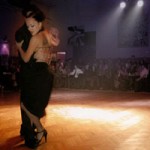 1. Salón Canning
1. Salón Canning
This milonga was restored a few years ago and as a result it has a nicely luxurious look and feel. It also has a high-quality, polished dance floor, good acoustics and good organizers. It’s a great venue to take visitors to if you want to impress them. On the other hand Salón Canning is well-known to tourists, which can rob it of a little authenticity and lead to some of the men there being more interested in picking up a gringa than dancing. It can also get very crowded, particularly between midnight and 2am.
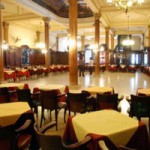 2. La Confitería Ideal
2. La Confitería Ideal
La Confitería Ideal is of course many different things. It’s a coffee shop, a famous tourist attraction (/tourist trap), a beautiful old building and a movie set. And also, it’s a milonga. The very best dancers don’t come here anymore, but that shouldn’t matter. If you’re a beginner there are classes every day of the week (check the website for details), or you just want to watch no-one will mind. You can also take photos of the dancers as long as you observe etiquette and do it mostly from your seat.
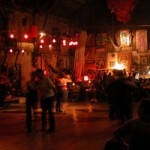 3. La Catedral
3. La Catedral
This milonga gets points for sheer originality. Unlike many milongas it’s not located in a shabby old dance hall or a beautiful Art Deco building, but rather a factory which has been converted into a big tango salon strewn with beat-up old furniture and strange artifacts. A big portrait of Carlos Gardel smiles down from the wall behind the high stage area. It all has a sort of grungy appeal. La Catedral attracts a young crowd and plenty of foreigners, particularly on Tuesday nights when they have a beginner’s lesson.
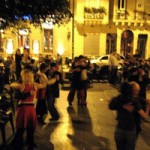 4. La Milonga del Indio
4. La Milonga del Indio
This charming outdoor milonga takes place in Plaza Dorrego every Sunday at 8pm. The stallholders of Sunday’s regular Feria de Antigüedades pack up, the tourists leave, and a low-key milonga takes places under strings of lights. Great.
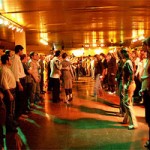 5. La Viruta
5. La Viruta
A classic and very popular Buenos Aires milonga. Friday and Saturday nights are always packed, so if you want some space go late (like 3:30am). Sundays, Wednesdays and Thursdays are the nights when you’re most likely to hear some Electo Tango
Daily Milonga Guide
They say that there are 15-30 milongas in Buenos Aires every day of the week. One a day will probably do as long as it’s the best of the night! Read on to find out which milonga to choose on each day of the week.
* Monday: Parakultural. A friendly, informal, slightly chaotic milonga. It’s held at Salón Canning, which is at Scalabrini Ortiz 1331 in Palermo. The music is particularly good, as is the food, and the venue has a beautiful wooden floor (many milongas are not so blessed). Between 7pm and 9pm there’s a class for all levels, and between 9pm and 11pm there’s a class for intermediate and advanced dancers. Note that Parakultural is a roving milonga which occurs in other venues on other days of the week.
* Tuesday: La Catedral. This milonga, at Sarmiento 4006 in Almagro, has a lesson every Tuesday night followed by dancing. It’s a little hard to find, as it’s upstairs and there’s no sign out the front, but once you find the entrance (right near the corner of Medrano), just stride up the stairs and you’ll find your way in. Once inside you’ll notice that it’s located in the top level of an old factory. It’s a big though atmospheric space, with lots of old couches and techno-grunge oddities adorning the walls. Very popular with foreigners. Also good on Friday nights.
* Wednesday: La Garufa. Since late 2009 there has been a new milonga every Wednesday night at Ciudad Cultural Konex (which is located at Sarmiento 3131 and which you might know from its Monday-night event La Bomba de Tiempo). There’s a class starting at 8pm and a milonga from 11pm. There’s a very mixed program at Ciudad Konex including performances, bands and orchestras and exhibitions of tango photography. It tries (and succeeds) to blend the traditional with the cutting-edge of tango.
* Thursday: Niño Bien. A big, popular milonga with a reputation for a great atmosphere. It’s located at Humberto Primo 1462. It attracts a broad range of dancers including a lot of tango stars – unless you’re an aficionado you of course won’t recognize them, but unsurprisingly they’re amazing dancers. The only drawback of Niño Bien is that because it is so well known, it gets very crowded.
* Friday: La Viruta. Held in the basement of the somewhat homely Armenian Cultural Center at Armenia 1366 in Palermo. The crowd is a young and friendly mix of expats and Porteños. Often traditional tango music is mixed with other styles, like electronic, salsa, swing, rock n roll and Chacarera. Live music and demonstrations are common. Classes are from 7pm to 8:30pm and from 10:30pm until midnight (there’s a salsa class in between). The practica starts at midnight.
* Saturday: Milonga de las Morochas. You’ll find this milonga at a place called Plaza Bohemia, located at Alsina 2540. There are classes that start at 21h. The cost of the class is $ 35 and it includes staying for the milonga. For those who don’t go to the class, the milonga starts at 22.30hs. and admission is $ 30. If you want to make a reservation you can call 1549388108. The lounge has a restaurant and bar with homemade little meals and good prices, for those who wish to eat.
* Sunday: Matinee at Confitería Ideal. If you’ve designated Sunday as the one night to get to bed early, then opt for the matinee milonga on Sundays at the famous, Art Deco, Confitería Ideal (Suipacha 384). The dance floor is upstairs (downstairs it’s a coffee house). It starts at 3pm and goes until 9pm. Confitería Ideal is a great place just to watch tango, but you will of course be expected to buy a drink.

19 Comments on “Buenos Aires Tango & Milonga Guide”
Wow, I’m so impressed with how much time and effort went into this post!!! This is going to really help a lot of people.
DNI (tango school?) – do you have any info/ opinions ?
By the way, this is the best most / informative web page on tango in BA I have found. THANKS
Hi
Excellent material.
You may want to view a host of articles, excellently written (if I may say so myself 😉 about tango on
http://www.tangoinfo.com.au
This inlcludes a very detailed history of tango, milonga and vals.
Warm regards
Eran
Excellent post – in fact I’m using it to plan out my week right now 🙂
To Elise’s question about DNI – I’ve been going there for classes on a daily basis for the past 5 months. Honestly, it is the best thing I’ve done here in Buenos Aires. The teachers are phenomenal.
Thank you Dennis, I might bump into you then…
Thanks so much for this! I’ve just booked myself in for a trip to Buenos Aires in a few weeks and was wondering how to figure out which milongas were the best ones to go to, and whether I’d be able to cope with going to one every night… we’ll see!
Any tips for a non-Spanish-speaking tango beginner? I daren’t even call myself a novice!
Pingback: San Telmo
Teachers: Cacho Dante hasn’t been giving classes since 2010 because of a serious health problem. Tango Brujo is no longer in business.
I am a single female, late 30’s, who will be travelling to Argentina next week. I would love to take a few classes and go to milongas. Is it ok for me to go alone or should I try to find a partner?
Pingback: Stay In Buenos Aires | Guest Travel Writers
Your writing has improved leaps and bounds since the gringo first the cobbles of Ba As! Great article and a good read even for sensory dulled expat!
btw niño bien is closed now
aparently….
Can you suggest a bar that might have locals dancing in the afternoon. Here on a cruise but not overnight
Niño Bien is no more, now La Milonga de los Zurcco…
Pingback: Sassy's Argentina Guide - where to stay and what to do in Buenos Aires, Mendoza & Patagonia - Sassy Hong Kong
This article has certainly been really helpful in understanding more about the history of Tango. Thank you for this post. I wasn’t able to go to the Tango places that was recommended in your post but I’ve found this other place really useful as well.
It is called Fundacion Tango. Here is a website: http://english.fundaciontango.org.ar/tango-classes.htm
I found the teachers really friends and they speak English. What I really appreciated in this place is that it is a NGO. Their main purpose in operating is to share the cutlure of Tango for all. On Saturdays they even offer free Tango Therapy for those who have Parkinson.
If I just want to sit down and have a drink whilst watching locals dancing tango could I then just go to anyone of these Milongas?
I’ve already done the touristy tango show..
Pingback: Dancing Tango Is A Must Do Experience In Buenos Aires!
Pingback: Tangoles in Buenos Aires? Neem eerst wat Argentijnse Tangolessen in Nederland. – Priveles Argentijnse Tango